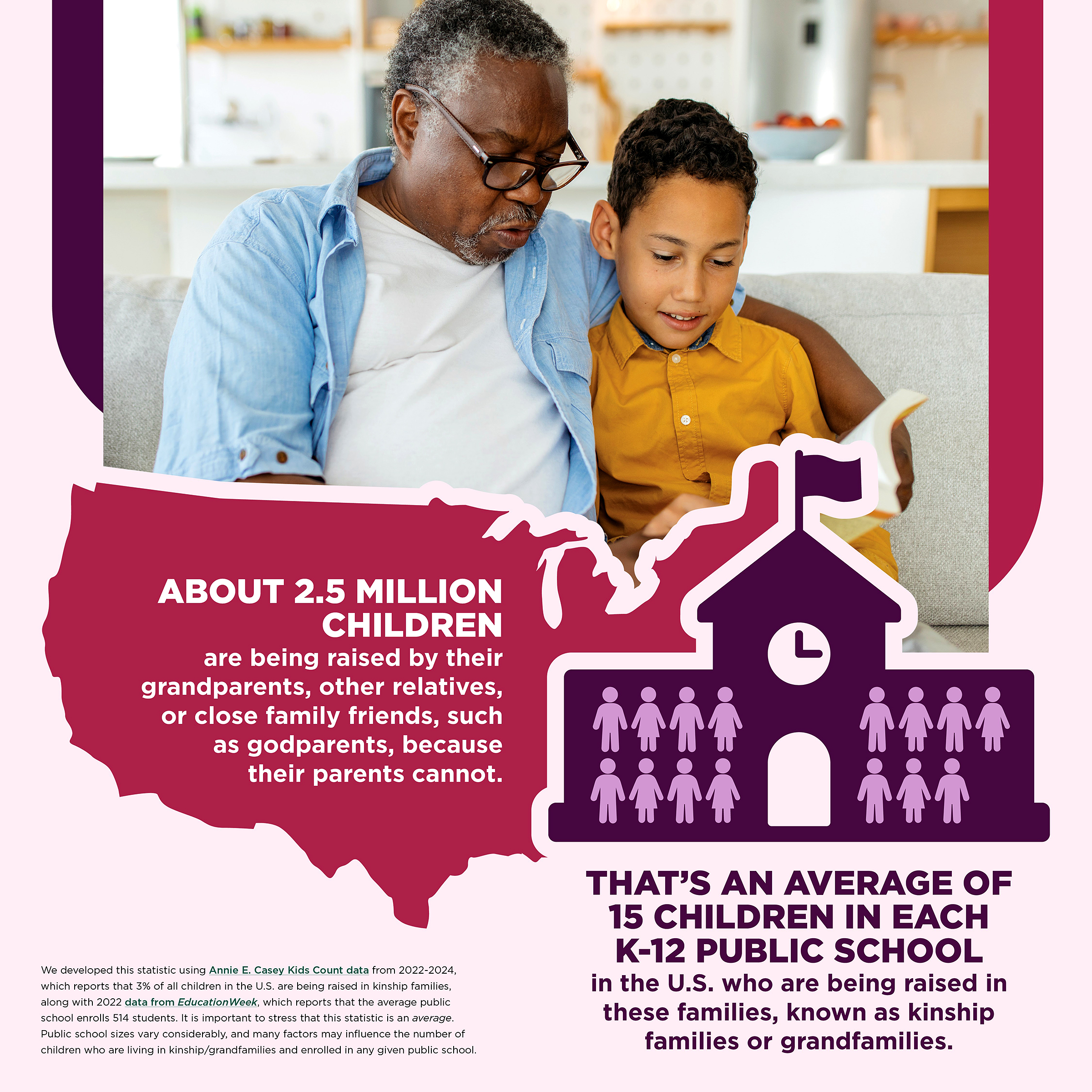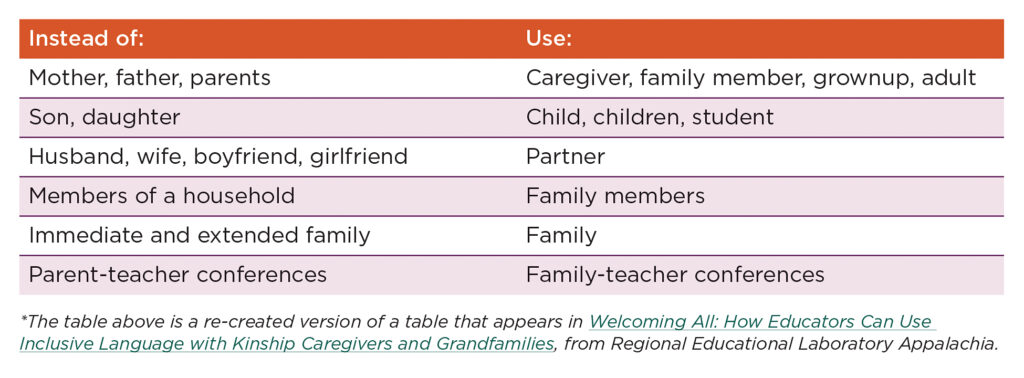
Grandfamilies and Your School
Nontraditional guardianship is common in schools and needs leadership support.
Topics: Family and Stakeholder Engagement
Picture a 9-year-old—we’ll call her Ashley—who moves in with her grandmother because her parents’ substance misuse has made it impossible for them to parent. Grandma loves Ashley deeply and takes her in, but Grandma faces significant challenges enrolling her in a new school nearby, requesting another 504 plan and exploring an IEP.
Without a legal relationship such as guardianship, Ashley and her grandmother will need to navigate systemic hurdles that limit their access to essential educational services, resources, and opportunities. Despite her best efforts, Ashley’s grandma struggles to secure a birth certificate and other necessary documents needed to get her enrolled. Ashley misses two months of school.
Stories like this are common. About 2.5 million U.S. children are being raised by grandparents, other adult relatives, or close family friends, with no parents in the home. Many children from these families likely attend your elementary school. Those of us who work with them often refer to them as “grandfamilies” or “kinship” families, but the families might not see themselves in those terms.

The systems and services created to help U.S. families were not designed for grandfamilies. Their needs are essentially invisible, and the supports to address those needs also remain virtually nonexistent. Identifying and supporting kids in grandfamilies can help you improve their educational outcomes.
Five Actions You Can Take to Support Grandfamilies
Identifying grandfamilies and recognizing their needs are important steps toward better academic outcomes, fewer school changes, improved attendance and school safety, more chances for involvement in school activities, lower rates of disciplinary action, a lower likelihood of repeating a grade, and fewer experiences with bullying.

Here are several ideas for what principals can do to identify and engage with grandfamilies. All of these ideas and more are available in a new toolkit for K–12 school professionals available from the Grandfamilies & Kinship Support Network at bit.ly/4hAhVcm.
1. Ensure that school enrollment forms explicitly include children raised by kin. Consider asking all families to complete a form that includes a blank space or multiple options to identify the caregiver’s relationship to the child. Other potentially helpful questions are on a form created by Virginia’s Family Engagement Network and Formed Families Forward: bit.ly/4gH8M0a.
Offer to help parents and caregivers with enrollment. Make computer and/or paper versions of enrollment forms available in the school office. If your school requires notarized documentation, pay for school office staff to become certified as notaries. Also encourage a review of the district’s school enrollment form. Language that includes options for various family situations can help make the process of enrollment clear and establish a welcoming tone.
2. Welcome each grandfamily with tailored language and materials. Use the information from the forms to reach out to and welcome grandfamilies. If possible, collaborate with a kinship navigator (search for one at bit.ly/3EzlOQ0) or other kinship service provider, and educate staff about kinship/grandfamilies. Idaho’s Department of Health and Welfare offers a good flyer: bit.ly/4k4Qf0S.
Consider creating and using a “permission to contact” form like the one used in New York State (bit.ly/4hykQlA) to help caregivers give your school permission to
share their information with kinship service providers so that the provider can contact the caregiver directly to offer support.
3. Use inclusive language in all school communications and activities. School communications to families traditionally use terms like “mom,” “dad,” or “parent,” but kin caregivers might not see themselves in those roles. The same is true from the children’s perspective; when schools send materials home for “parents,” children raised by kin might think that the communication is meant for their absent parents and throw it away rather than share it with a caregiver.

4. Include children and caregivers in the IEP process and in the development of 504 plans. Accept referrals from kin caregivers for requests to assess the children they raise for special education services, and include caregivers in the process of developing these services. Follow federal law, which recognizes that kin caregivers are often acting as parents and should be included in special education processes.
5. Consider providing school-based supports tailored to kinship families. Explore the possibility of developing a school-based support group for kin caregivers and/or children raised by kin; see our tip sheet at (bit.ly/3QhVA72) to get started.
Partnering with a family resource center is another good way to support families. And if you work at a Title I school, reach out to kin caregivers and service providers for input on how Title I funds should be used. For tips on engaging kin caregivers in decision-
making, see bit.ly/3QedJTu.
You don’t have to go it alone! There are lots of people in your school community who can play a role in supporting children in grandfamilies, including school board officials, superintendents, teachers, and counselors.
Ana Beltran is director of the Grandfamilies & Kinship Support Network, a national technical assistance center.
Maari Weiss is a project specialist with the Grandfamilies & Kinship Support Network.

